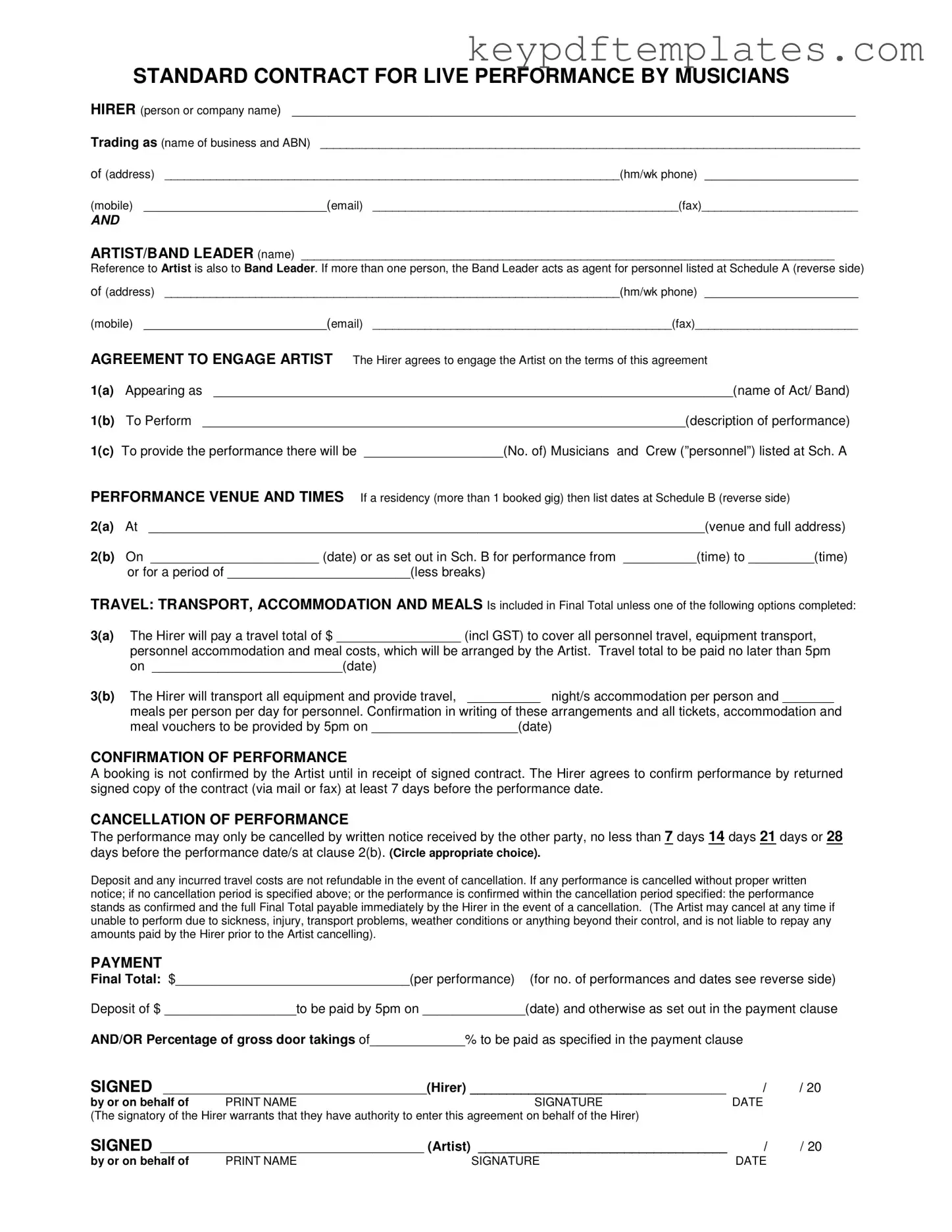Misconception 1: The Live Performance Contract is only for large events.
This contract is suitable for performances of any size, whether for a small venue or a large concert. It ensures clear terms for both the artist and the hirer, regardless of the scale of the event.
Misconception 2: Once signed, the contract cannot be changed.
While the contract is a binding agreement, both parties can negotiate and amend terms if both agree in writing. Flexibility is often necessary to accommodate specific needs.
Misconception 3: The artist is responsible for all travel and accommodation costs.
The contract outlines that the hirer may cover these costs or the artist can arrange them, depending on what is agreed upon. This ensures clarity about who is responsible for expenses.
Misconception 4: Cancellation policies are strict and inflexible.
The contract allows for cancellations, but they must be communicated in writing within a specified timeframe. Understanding these terms can help manage expectations and avoid disputes.
Misconception 5: The hirer has no obligations after the performance.
Post-performance obligations include timely payment and ensuring that all agreed-upon conditions are met. This protects the interests of the artist and ensures a professional relationship.
Misconception 6: The artist has no control over the performance.
The contract grants the artist artistic control, allowing them to manage the content and quality of the performance. This is crucial for maintaining their brand and reputation.
Misconception 7: The hirer does not need to provide any insurance.
The contract specifies that the hirer must maintain certain insurance policies, protecting both parties from potential liabilities during the event. This is a critical aspect of event planning.
Misconception 8: The contract is only beneficial for the artist.
Both parties benefit from the contract. It provides the hirer with clear guidelines on their responsibilities and ensures that the artist is compensated fairly. This mutual benefit fosters a positive working relationship.
